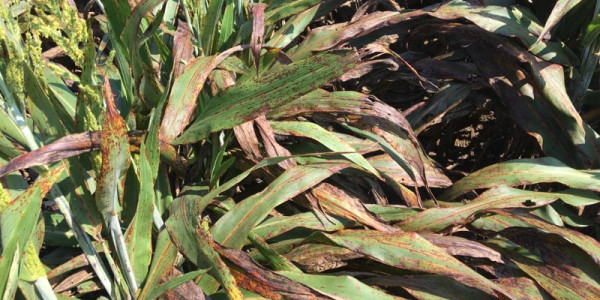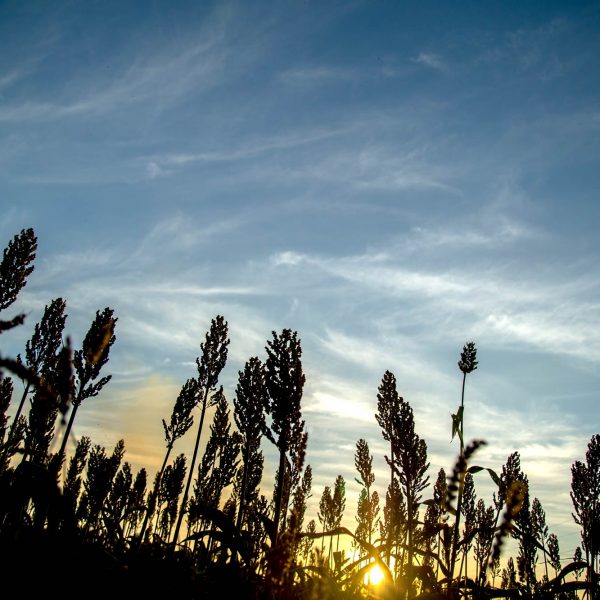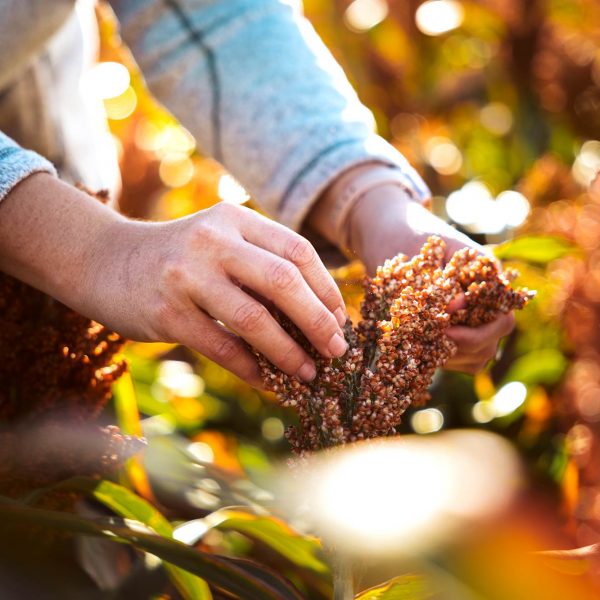
Postemergence Weed Control in Sorghum
Brent Bean, Ph.D. Sorghum Checkoff Agronomist
Postemergence Weed Control in Sorghum
In grain sorghum, it is always recommended to apply a preemergence herbicide to control weeds before they ever emerge. If postemergence weed control is needed, there are a number of active ingredients to choose from for broadleaf weed control. In regard to grass control, we now have three active ingredients that can be used with herbicide tolerant hybrids that contain the Double Team, iGrowth or Inzen traits. The following is a brief description of each herbicide and how they are used:
Atrazine. Atrazine has an added advantage when applied postemergence because not only is it effective on small emerged broadleaf weeds, but also provides preemergence activity. Soil restrictions often prevent preemergence use of atrazine in sandy, high pH or low organic matter soils due to the potential for crop injury, but these restrictions do not apply to postemergence application. Growers, however, should check for any crop rotation restrictions that might apply.
Clarity® (dicamba) or 2,4-D amine. Clarity applied at 8 ounces per acre or 2,4-D applied at 1.0 to 1.5 pints per acre are effective treatments on most broadleaf weeds. Risk of crop injury is an issue with Clarity or 2,4-D, and yield reduction can occur even when physical injury symptoms are minimal. To reduce the risk of crop injury, Clarity or 2,4-D should be applied after all sorghum has emerged but before the height exceeds 8 to 10 inches. The addition of surfactants and other adjuvants with Clarity or 2,4-D are not recommended because they tend to increase crop injury. Weeds less than 4 inches tall are much easier to control than larger weeds. Consider applying these at reduced rates, but in combination with other products, especially atrazine or Peak.
Atrazine + dicamba or 2,4-D + bromoxynil. A combination treatment of one qt atrazine + 2-4 oz dicamba or 1 pt 2,4-D amine + 1 pt bromoxynil can be an effective treatment. These rates can be adjusted based on the size of the weeds and potential risk of atrazine carryover.
Starane® Ultra, StareDown™, Others. An alternative to Clarity and 2,4-D, is fluroxypyr, which is safer to use on sorghum. The product has good activity on kochia, morning glory species and a few other broadleaf weeds and is often used in combination with other herbicides.
Huskie® FX. This product contains the HPPD active ingredient pyrasulfotole plus bromoxynil and fluroxypyr. Huskie FX should only be used in areas free from HPPD-resistant weeds. Though most effective on small weeds, when necessary, growers can use Huskie FX as a rescue treatment on larger weeds. The product can be applied to sorghum plants up to 30 inches tall or before flag leaf emergence. The addition of a low rate of atrazine plus an adjuvant provides the best control. Temporary sorghum leaf spotting and yellowing likely will occur with the use of Huskie FX, but sorghum will typically rebound from these injury symptoms within a few days.
Peak®. This herbicide is very safe on sorghum plants up to 30 inches tall. However, Peak, a sulfonylurea herbicide, is not as effective on larger broadleaf weeds. Peak should not be used where ALS-resistant weeds are present. Typically, Peak is most effective when applied at a reduced rate with a mix of Clarity or atrazine. Crop rotation restriction to cotton or soybeans is 18 months in many regions.
Ally®XP + 2,4-D. Ally is labeled to be applied postemergence in sorghum at a twentieth of an oz but MUST include 2,4-D in the mix. The 2,4-D has a safening effect that prevents injury to the sorghum from the Ally. Use 8 oz 2,4-D amine. Atrazine can be included in the mix to provide additional post activity as well as soil residual activity. Do NOT add and adjuvant to this mix or increased crop injury may occur.
Permit®. For fields infested with nutsedge, Permit is a good choice. The product also is effective on cocklebur, sunflower and a few other broadleaf weeds, but not effective against pigweed. A good premix to consider is Yukon®, which combines Permit with dicamba. Yukon at the 4 oz and 6 oz rates, contain the equivalent of 4.4 oz and 6.6 oz of dicamba (Clarity), respectively.
Aim®. Aim is a burn down product that is best used on small weeds less than 2 inches tall.
Facet® or Quinstar®. The active ingredient quinclorac, is primarily used where bindweed is a problem in sorghum, although it has reasonably good activity on small annual grass.
FirstAct™, ImiFlex™ and Zest™. These products are used in the new herbicide tolerant sorghum hybrids with the Double Team, igrowth and Inzen traits, respectively. Visit the companies or the Sorghum Checkoff website for more information on their use.
Dual Magnum®, Warrant® and Outlook™. These are Group 15 herbicides that only have preemergence activity, but can be safely applied to emerged sorghum. These products will provide soil activity and prevent new weeds from emerging.
For a more complete list of products, growers can visit the United Sorghum Checkoff Program Weed Control Site and scroll to the bottom of the page and follow the links to various state extension weed control guides. Growers should always read and follow label instructions and consider regional and crop rotation restrictions when using herbicides. Common trade names were used in this document, but many of active ingredients of these products may be sold under additional trade names.




